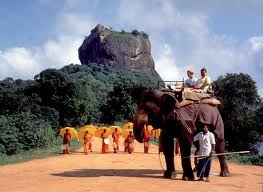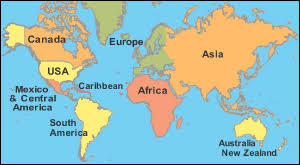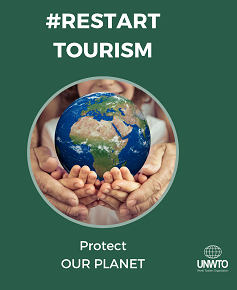Sri Lanka – the Wonder of Asia

Sri Lanka has set a target of 22,500 rooms in the next five years when tourist arrivals would reach 2.5 million, and aims to turn the entire country into a tourism development zone, according to Dr Nalaka Godahewa, Chairman Sri Lanka Tourism. He was making the keynote address at the 24th Joint Meeting of the UNWTO commission for East Asia, South Asia and the Pacific : UNWTO high level Regional Conference on Green Tourism held in Thailand recently.
Speaking on “Marketing an emerging tourism destination in Asia : The Sri Lanka perspective of Green Tourism”, he spelt out the entire plan and philosophy behind the drive to grow tourism in the country referring in particular to giant strides made by individual hotel companies on issues of environment and green tourism. Here are excerpts of his presentation: “Amongst the recent global trends, green tourism plays an important role. The number of travellers seeking green tourism destinations is clearly on the rise. According to UNWTO research 34% of world travelers today are willing to spend more for a hotel that has a record of being environmental friendly. 50% of tourists are willing to pay more for a hotel which shares the economic benefits with the community.
What is green tourism or sustainable tourism? We can simply define it as responsible travel to natural destinations that preserves the environment and improves the well-being of local community thereby ensuring sustainability. The Tourism Development Strategy document published by the Ministry of Economic Development has very clearly articulated the sustainable tourism development policy of the country which is built on three main pillars.
Firstly making sure that there is absolutely no negative impact on environment in any of our tourism development activities and also to contribute actively towards conservation of natural environment. Secondly to ensure that the economic benefits of the tourism industry is shared with a larger cross section of the society.
Thirdly to ensure a pleasant experience throughout the stay for each and every tourist so that these tourists will not only repeat their visits but also promote the destination to friends and relatives. In Sri Lanka tourism is 100% private sector driven industry.
The Government has confined its role to planning, policy making and regulation. Of course we support the development of the industry through development of common infrastructure like roads, ports, airports, energy and water supplies etc. The private sector is making the business investments and is responsible for capacity building, innovation, value creation and quality assurance. Just to demonstrate how the country is approaching green tourism, let me therefore take a few examples from the private sector. Aitken Spence is one of the largest groups of companies in Sri Lanka involved in tourism. All its nine hotels are Earth Check Silver certified for energy and water savings, waste management and community involvement.
They are all ISO 14001 certified for environment management. One of the group hotels has already received ISO 50001 certification. Some of Aitken Spence group hotels can calculate their carbon footprint and are able to state how much CO2 is emitted per guest per day. Jetwing, another large group in the tourism industry, is a PATA gold award winner for corporate environmental program in 2012.
They have an ongoing environment conservation project called Jetwing Eternal Earth Project. Through this program they educate the younger generation of country on best practices of environment conservation and minimising global warming.
Most of their hotels invite the guests to volunteer to plant a tree when they stay at the hotel. What is interesting is not just the idea of planting a tree but the follow up. The tree is given a number and the information of the progress of the tree is reported in a website that the guest can visit. So year on year the guest can monitor how his or her tree in Sri Lanka is growing. They can one day visit the tree or recommend their friends or relatives who visit Sri Lanka to go and see the trees they planted. John Keels is another large group managing two famous hotel brands in Sri Lanka. They have started out sourcing most of the services originally managed in-house creating more opportunities for entrepreneurship.
For example recently they discontinued one of the largest fleets of cars owned and operated by them and started hiring vehicles from private owners for tourist transportation. Around their new hotels they help upgrading the nearby shops owned by small time vendors and encourage their guests to go out and shop.
The in house training facilities are extended to rural youth with no commitment to join the group after training. There are many other groups of companies such as Serendib Group, Tangerine Group, Taj Group, etc which have similar initiatives which focus on environment conservation and community development.
I must emphasize that it is not only the group companies who are actively focusing on sustainability. There are a large number of boutique hotels, villas and lodges which have won world attention for best practices in eco tourism. There are many hotels in the country which use renewable energy, recycle waste and cook using bio mass generated out of waste.
When we talk about tourism development it is also interesting to note that the Government is not focusing on specific tourism zones like many other counties. For us the entire country is a tourism development zone.
Sri Lanka has an inherent advantage of having a highly diversified tourism product which could be pitched against any other well established tourism destination in the world. It has beaches like Maldives or Mauritius, ancient heritage sites like Egypt or Greece, Rain forests like Congo or Amazon, art and culture like India or Thailand, waterfalls like Zambia or Canada, wildlife like Kenya or South Africa, natural beauty like Switzerland or Myanmar, gemstones like Madagascar or Burma, spices like India or Indonesia and festivals like China or Brazil.
Now just think of any tourism destination in the world where you can find all these in one place. Even if you do, where else can you cover all these within a few days? Sri Lanka is probably the only country which makes it possible. To many tourists visiting Sri Lanka is a refreshing experience. The whole country is a natural wonder. That is why in our tourism promotions we use the tag line “Refreshingly Sri Lanka- the Wonder of Asia’ .















